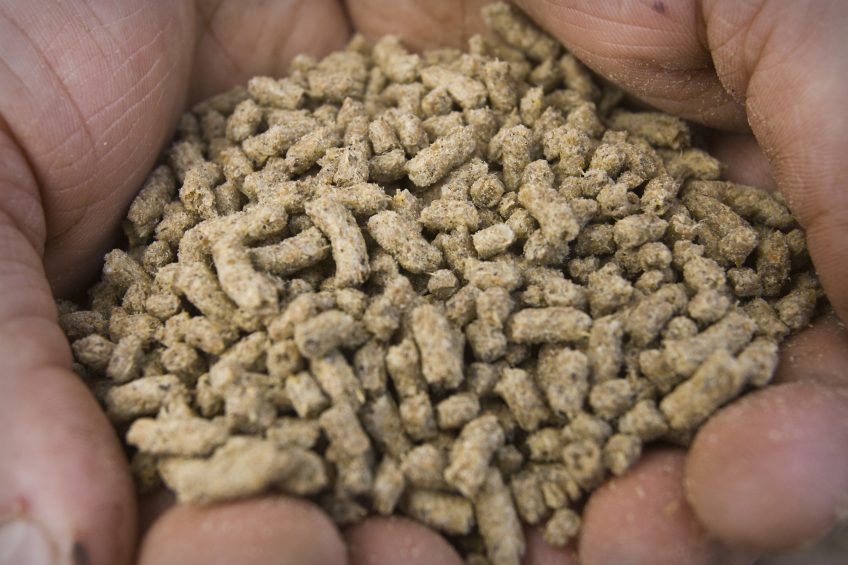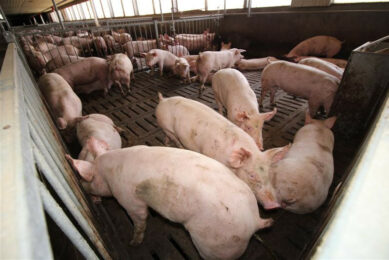What feed measures could reduce ASF spread?

The handling of feed ingredients as well as the use of porcine plasma are both being looked at critically, now outbreaks of African Swine Fever (ASF) continue to spread in e.g. China and Belgium.
In the United States, the National Pork Board (NPB), National Pork Producers Council (NPPC), the Swine Health Information Center (SHIC) and the American Association of Swine Veterinarians (AASV) recently released a combined statement for US pig producers to look at handling procedure of imported feed ingredients.
The combined statement refers to research in PLoS ONE by Scott Dee and others, making it clear that it is for swine disease viruses to survive in shipments of certain feed ingredients during transoceanic shipping to US ports and even to inland points of feed manufacture.

Read more on pig health in the Pig Progress health tool
Advice for holding time for feed ingredients
Based on this current research, a holding time of 78 days after the date of manufacture and bagging or sealing to prevent additional contamination (‘born on date’) for amino acids, minerals or vitamins will degrade 99.99% of viral contamination. The holding time extends to 286 days for soybean meal to allow for similar viral degradation, once shipped to prevent additional contamination.
The statement is to be interpreted as an educational tool and not a recommended course of action. Dave Pyburn, DVM, senior vice president of science and technology for the National Pork Board, said: “It’s just one more tool in our arsenal against African Swine Fever and other diseases that we hope will offer US producers more protection against this growing global threat.”
Feed association asks for caution
The American Feed Industry Association (AFIA) responded to this advice and expressed caution regarding the implementation of measures that are neither proven scientifically or approved by federal, state or foreign regulators.
However, given preliminary research has shown the virus can survive a simulated transboundary shipment in inoculated feed and feed ingredients, many in the pork industry are still calling for, or are moving forward with, measures which some believe will mitigate the risks of transmission via imported feed ingredients.
Based on current, but limited research
While the pork organisations’ document represents their current thinking on minimum ingredient holding times, it should be noted that it is based on current, but limited, research.
The pork organisations calculate a minimum holding time for holding the product from non-biosecure facilities that is bagged or sealed for 78 days after a ‘born-on-date’ (i.e., date of packaging or sealing) and 286 days for bulk ingredients from non-biosecure facilities. It also provides background information on how those dates are derived with the current, but limited research. AFIA stands firm in its opinion that additional research in this area is necessary.
Use of blood plasma in China
In China, the government took some decisions regarding feed ingredients. Spray Dried Porcine Plasma (SDPP) has been suspended to be used in animal feed, as of September 13.
At an earlier stage, however, the European Animal Protein Association (EAPA) already stated that the use of SDPP is completely safe. In a press statement, EAPA said, “SDPP is exclusively made up from blood of healthy animals after veterinary approval from farms free of ASF under supervision and control of competent authorities.
Read more on African Swine Fever in China, Belgium and other countries – including interactive outbreak maps – in the special page on ASF at Pig Progress
“The manufacturing process of EAPA members contains several independent safety steps such as pooling liquid plasma from different sources and therefore, this contribute to a dilution. Pooling is a recognised biosafety feature for human plasma products used for transfusions.
Spray-drying at high temperatures
The EAPA statement continued to say, “The second step is the spray-drying process at high temperatures (80ºC throughout its substances) that inactivates high heat resistant viral micro-organisms (using different model viruses), including non-enveloped viruses like Swine Vesicular Disease virus (SVDv).
During the PEDv outbreaks, porcine plasma also was thought to be involved. This article argues why that happened too fast.
“Finally, the storage of final dried product at controlled warehouse temperature (>20ºC) during minimum 14 days has been demonstrated to be effective in inactivating enveloped viruses similar to ASF like Porcine Epidemic Diarrhoea virus (PEDv) or porcine reproductive and respiratory syndrome virus (PRRSv).”
Manufacturing process is aligned with WHO guidelines
The press release also mentioned that the manufacturing process of EAPA members for spray dried blood products are aligned with the World Health Organization (WHO) guidelines for assuring viral safety of human plasma products used for transfusions, with the additional safety feature that animal spray-dried blood products are used in animal nutrition products that are orally fed to animals.











